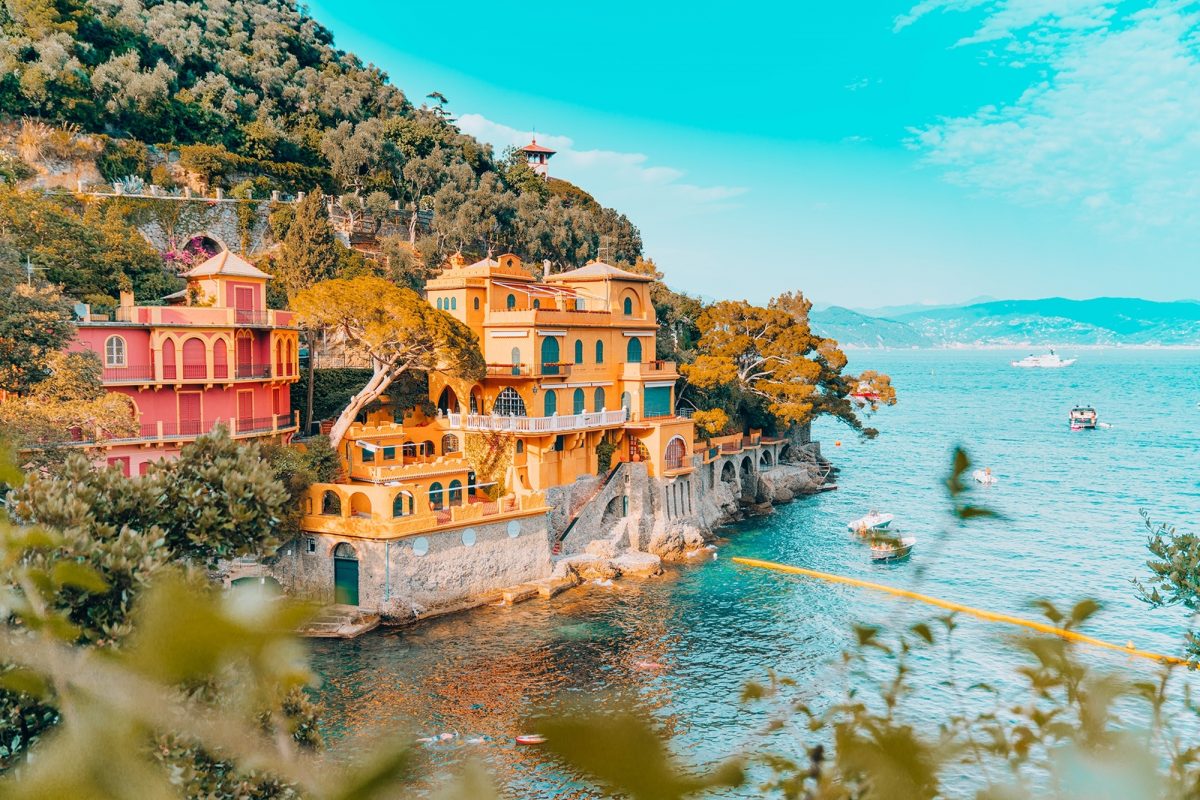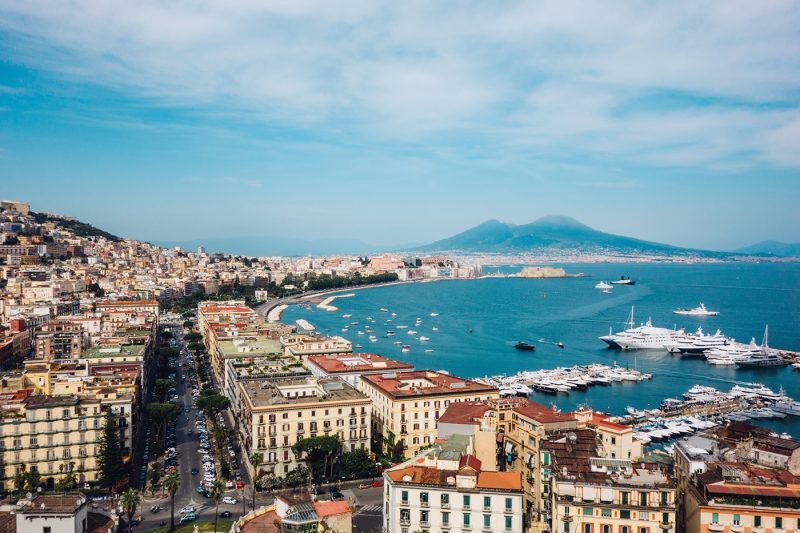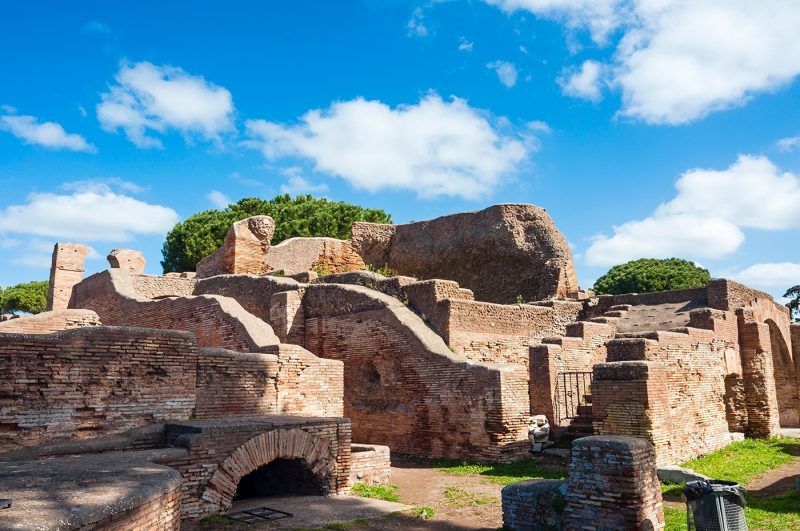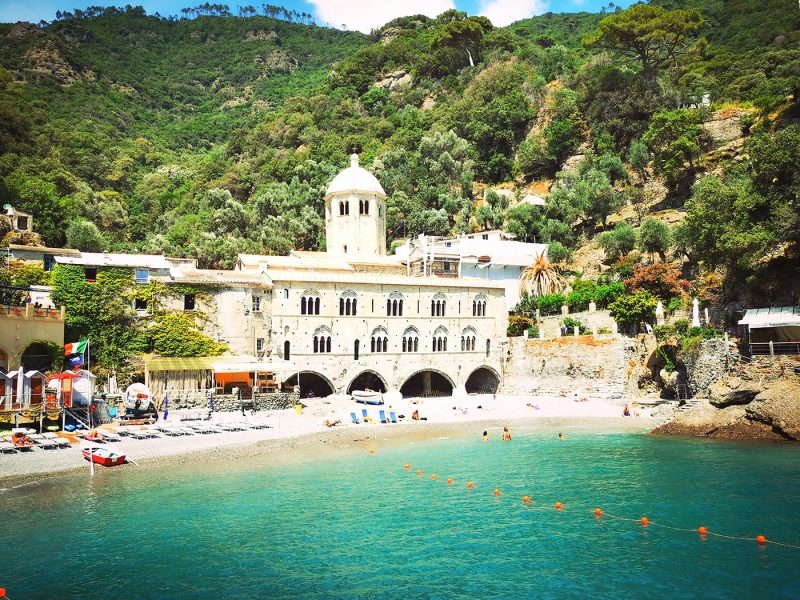
Unsplash
Getting to the literary soul of Italy: one writer's journey
Some countries resonate with us more than anywhere else. Writer Chrissie Manby shares the ways Italy has inspired literary classics – and her own novels
As a novelist, one of the questions I’m most frequently asked is, “Where do you get your ideas from?” The answer is, “Everywhere.” I’ve found plots for books in my own situation, in stories I’ve seen in the news, and in conversations overheard on public transport (mobile phones can make people very indiscreet). But if there’s one place I go back to again and again to find inspiration, it’s Italy.
An auspicious first visit
I remember the first time I visited Italy like it was yesterday. It was the beginning of what would become a lifelong love affair, though it didn’t feel much like it at the time. Arriving in Naples late at night, I was petrified. I didn’t speak the language, and the taxi drive into the city felt like a wild theme-park ride. The hotel I’d picked at random was a peculiar mixture of grand high ceilings with flaking gilt paint and scratchy grey blankets on the beds. I’d arrived too late for the hotel restaurant and was too scared to venture out in the dark on my own. I spent my first night in Italy eking out the chocolate bar I’d bought back in London.

Getty Images
In the morning, of course, it all looked much better. I woke to the warmth of the sun through gauzy curtains. Though it was early December, the air felt balmy when I stepped out on to the hotel restaurant’s terrace. And glittering on the horizon was the sea – the Bay of Naples and beyond that, the Mediterranean. I had never seen water so blue. I quickly got the hang of Naples. I ticked off the museums and wandered the labyrinthine city streets, gawping at the fresh produce on market stalls and wishing I knew how to cook. I ate the best pizza of my life – pizza was invented there, of course. But I soon realised Italy is about more than food.
A couple of days after my inauspicious arrival in Naples, I found myself strolling around the ruined city of Pompeii – a short train ride away – thinking about the lives of the people who had walked those same paths so long ago. I realised then that I was in love. As I sat in the ruins of Pompeii’s amphitheatre and turned my face to the sun, I wondered how it had taken me so long to find my way to such an amazing place. A writer could never be short of inspiration here. All around me, the stories of the people who had lived in Pompeii today and throughout history clamoured to be told. That evening, I wrote a short story inspired by a mosaic in one of the excavated villas. Those mosaics elevated scenes of daily life into true art, reminding me that there is beauty in the everyday, and even the most ordinary life is worthy of celebration in words.
A creative paradise
I’m not the first writer to be inspired by Italy – and I won’t be the last. There isn’t, as yet, a book called The Life-Changing Magic Of Italy, but there should be. ‘Trip to Italy has life-changing consequences’ is definitely something of a literary genre and it’s not a new one. When E. M. Forster wrote A Room With A View in 1908, in which Lucy Honeychurch’s rigid, middle-class life is turned upside down by a visit to Florence, he kicked off a trope that has endured for more than a century.
Before he was a famous novelist, Forster was the tutor of the children of Henning August, a Prussian aristocrat, and his wife Elizabeth Von Arnim. Von Arnim took up writing as a mental escape from life with her boorish husband, and in 1922, perhaps inspired by Forster’s classic, she published The Enchanted April, in which two women, neglected by their husbands, take a holiday on the Italian Riviera near Portofino. They are joined by two other women, also escaping humdrum lives. The Italian spring works its magic and the women end their holiday transformed. Since Forster and Von Armin, Italy-is-the-cure-for-everything novels have come round as often as swallows returning for the summer. And then there are the memoirs. In 1996, Poet Frances Mayes cannily published an account of the renovation of her Tuscan villa, Bramasole. Titled Under The Tuscan Sun, it became a hugely popular film, with Mayes played by Diane Lane.
I’m not the first writer to be inspired by Italy and I won’t be the last
More recently, Elizabeth Gilbert did her bit when she took her heartbreak to Rome in Eat, Pray, Love – Rome was where she did all the eating. Ten years after Eat, Pray, Love came out, Gilbert published Eat, Pray, Love Made Me Do It, which documents some of the life-changing adventures her book inspired. And last year, Kamin Mohammadi caused at least one woman – this one – to re-evaluate life from an Italian point of view when she published Bella Figura, her memoir of leaving a grinding existence in London for sunny Florence and finding health, happiness and, of course, the love of her life along the way.
Historical inspiration at every turn

Robert Harding
Italy is a country that wears its history lightly. There is so much of it to see. Around every corner in Rome, there’s a building that has been there for millennia. The Pantheon, a Roman temple which is now a Catholic church, was completed by the Emperor Hadrian in 126AD. It’s the most well-preserved Roman building in the world and you can walk inside it for free. Its huge 4,535 tonne concrete dome – the Romans invented concrete – has an opening at its centre, an oculus, which lets in natural light in a magical beam. The dome of the Pantheon features on the cover of one of my favourite books, the weird and wonderful Indigo, by my friend, the late fantasy author Graham Joyce. When it’s wet, the oculus lets the rain in too and it’s easy to see how the atmospheric Pantheon inspired Joyce’s supernatural tale.
Speaking of history, the first time I saw Venice – an Italian city that truly looks as though it belongs in a history book – I could hardly believe my eyes. As I skipped across the lagoon on a vaporetto, the city looked like the backdrop to an opera. As Truman Capote once put it, “Venice is like eating an entire box of chocolates in one go.” The elegant buildings edging the Grand Canal whispered stories of Carnevale excess. My imagination was well and truly stirred, and I expected to see a mysterious figure in a cape and mask dashing across every bridge.

Unsplash
Venice itself rewards aimless wandering. Away from the crush of St. Mark’s Square, in Dorsoduro, the city’s university district, I found a restaurant packed with newly minted doctors celebrating their graduation in riotous song, including snatches of opera that added to the curiously timeless atmosphere. Stepping out into the misty night and catching sight of a figure quickly disappearing down a dark vicolo, I could easily imagine how Daphne du Maurier had come to write what has to be the most frightening story ever inspired by Italy, the incomparably creepy Don’t Look Now.
Creative stimulation
One particular visit to Venice, where I got lost in streets that echoed with the sensuous voices of the past, led me to write The Girl Behind The Mask, published under my pseudonym, Stella Knightley, in which a modern heroine falls under the city’s spell as she researches the life of an 18th century heiress who became one of Casanova’s lovers. I set my last novel, Three Days In Florence, in that magical city. As she nears a big birthday, my heroine Kathy Courage takes a trip to Tuscany and realises her dream life could still begin at 40 when she meets an eccentric local family.
Italy crept into my own work again recently as I helped to research The Codebreaking Sisters: Our Secret War, the memoir of two English sisters, Pat and Jean Owtram, who worked in Allied intelligence during World War II. Jean was a Code and Cipher Officer in the First Aid Nursing Yeomanry, stationed near Bari on Italy’s Adriatic coast, where she coded messages for Allied agents supporting the Partisans in Yugoslavia. Her letters from the time speak of her own love affair with Italia as she describes the flora and fauna to big sister Pat, a Chief Petty Officer in the Wrens, who was watching preparations for D-Day from her post at a listening station near Dover. “I spend my leisure hours in an atmosphere of honey and buttercups and sun…” Jean wrote. “I counted fourteen different kinds of flowers yesterday. Cyclamens, crocii (yellow and mauve and tiny little ones) dog daisies, real daisies, buttercups, baby narcissae with a heavenly smell, dandelion-things and various little ones I don’t know.”

Getty Images
In her mid-nineties now, Jean’s eyes still light up at the memory of the Italian Apennines in bloom and her joy at finding herself in a place where the very best of art and culture was commonplace – even in wartime. She often joined the locals at concerts and the opera. “We always knew when it was going to be Puccini’s Madam Butterfly because the little boy next door would be washed and dressed up for his walk-on role as Butterfly’s son in act three. Gino, the cook at the FANY mess, would sing extracts from Tosca, La Bohème and Butterfly at the slightest provocation. As a music lover, it was wonderful to find myself in a place where everyone seemed to appreciate good music.”
Everlasting escape
Why has the literary love affair (and my personal love affair) with Italy endured? Why are Florence, Rome and Venice among the most visited cities in the world? Perhaps it’s that more than any other country, Italy has captured the Anglo imagination. The cliché of the flamboyant yet elegant Italian is the polar opposite of the cliché of the emotionally constipated Brit. Our stiff upper lip is fascinated by the apparent Italian openness. Everything about Italy seems more vibrant than its British equivalent. The food, the culture, the music, the light. Even the language is more expressive in the most ordinary circumstances.
A week in Italy has me waving my hands like a half-crazed conductor even as I talk about the weather. Paris may be a byword for romance, New York may promise bright lights and big success, but Rome, Florence, Venice and the tiny fishing villages that cling to the Amalfi Coast are where inhibitions can be shed and the uptight are inspired to live life according to their fondest dreams. In another life, I’ll be born in Italy. In the meantime, I can always pretend and write my escape plan into another novel.
Where to go in Italy to feel inspired
Chrissie shares her Italian must-visits for boosting creativity

Robert Harding
Ostia Antica “The Roman port isn’t as well-known as Pompeii, but it’s every bit as fascinating. Visit the bar, where you can imagine what nights were like in the 3rd century AD.”

Getty Images
San Fruttuoso, Portofino “From Portofino, I took a boat to this tiny bay and was enamoured. See it on the Camogli, Santa Margherita And Portofino Princess excursion.”

Alamy
Uffizi Museum, Florence “Housing masterpieces such as Botticelli’s Birth Of Venus, you can explore this wonderful gallery on a Princess shore excursion. My favourite piece, Michelangelo’s Doni Tondo, has a whole novel in its single scene.”
Be inspired on an Italian adventure of your own
More holiday-inspired ways to escape...
-

Five of the best destination-based reads for your next cruise
Good Housekeeping’s books editor Joanne Finney shares her favourite travel-inspired reads
-

Five of the best travel podcasts – especially for cruise guests
Grab your phone and tune in to be transported around the globe, wherever you are right now
-

Cocktails from your favourite cruise destinations
Let these cruise-destination-inspired cocktails take you on a delicious journey
